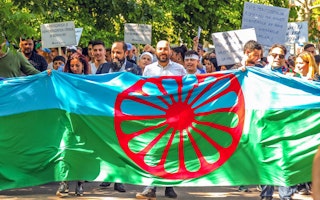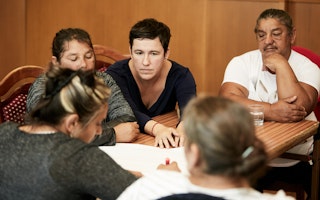Combating Roma Inequality with Numbers
By Bernard Rorke
The €1 billion pledge by European Commission president Barroso this week to assist “the most committed and most in need African, Caribbean, and Pacific countries” to reach the Millennium Development Goals (MDGs) should be applauded. But much also remains to be done to meet the MDG 2015 deadline for millions of Roma across Europe. Toward that end, Barroso should likewise insist that current and prospective EU members “produce effective results because time is running out.”
The gap between Roma and non-Roma in health, housing, education, and employment remains elusive. Five years into the Decade of Roma Inclusion 2005-15, the Roma plight has attracted unprecedented attention in the wake of the razing of illegal camps, the so-called voluntary repatriations of Roma from France to Romania, and the acrimonious exchanges between Commission officials and President Sarkozy.
Two EU Roma summits, one platform, and many European Parliamentary resolutions later we now see that the issue of Roma exclusion has moved from the margins to the mainstream of policy concerns. There is no doubt that this heightened concern is driven by the prospect of greater numbers of Europe’s poorest people migrating to Europe’s richest nations, rather than an unbridled commitment by political elites to universal values and fundamental human rights. But it has brought attention to the level of desperation that prompts much of the migration.
UNDP reports in 2003 and 2006, using measures ranging from literacy to infant mortality to basic nutrition, showed that Roma were among the poorest of the poor, and had to endure “living conditions closer to those of sub-Saharan Africa than to Europe.” More than half of those questioned in the surveys said they went hungry at least a few days every year. One in six said they were constantly starving, while one in three Roma children failed to complete elementary school. An estimated 44% of Roma households lived in poverty, and of these 15% lived in extreme poverty. Fifteen percent of children up to age 15 were not receiving vaccinations. Sixty-one percent of Roma households lacked indoor toilets, and a similar number lived without a bathroom or proper sewage.
Research conducted by UNICEF in 2007 in the countries of former Yugoslavia indicated that when it comes to Roma children, 47% were considered as “food insecure with hunger,” and many had never consumed milk or milk products, or ever tasted fresh fruit and vegetables. The experience of hunger is debilitating and humiliating. A hungry child cannot concentrate in school, and a hungry child feels shamed when seated alongside well-nourished peers. For many Roma children, acute material disadvantage is compounded by ethnic segregation in schools. Research conducted by the Roma Education Fund has confirmed that “separate” remains profoundly unequal when it comes to schooling, and succeeds only to amplify disadvantage and reinforce prejudice.
Progress towards reaching Decade of Roma Inclusion and Millennium Development Goals in the case of Europe’s largest ethnic minority is bedeviled by the lack of reliable ethnically disaggregated data, collected on a routine basis. The lack of reliable data about Roma communities remains a major obstacle to reducing inequality and eliminating discrimination. Put bluntly, if there are no data there can be no progress. If governments lack basic data they cannot devise effective targeted policies. Without reliable ethnically disaggregated data we cannot measure progress.
Our recent report No Data – No Progress confirms that the lack of disaggregated data is a major barrier to progress and weakens the impact of policies to promote equality and nondiscrimination. Such failures can result in actually worsening the situation for the impoverished, the marginalized and the disenfranchised. The European Commission could play a vital role in guiding and coordinating the efforts of governments to collect the sort of data we need to move forward in combating Roma exclusion.
The 10 Common Basic Principles on Roma Inclusion adopted by the European Roma Platform needs to become the manifesto for change to drive a coherent EU strategy that will make the MDGs a reality rather than an aspiration. The principle of “explicit but not exclusive targeting” of Roma populations (meaning that Roma are not the only ones that can receive funding—other groups may as well) needs to take root across the Directorates of the European Commission, become common sense in national parliaments, and find acceptance as the way forward to promote equity and cohesion in local municipalities.
A new study by UNICEF affirms that an equity-based approach, investing first in the world’s most disadvantaged children and communities, can be a cost-effective strategy to reaching the MDGs. The findings challenge traditional thinking to the contrary. Anthony Lake, UNICEF’s executive director asserts “an equity-focused strategy will yield not only a moral victory—right in principle—but an even more exciting one: right in practice.” This lesson must not be lost on Europe’s elected leaders and appointed bureaucrats.
Until December 2013, Bernard Rorke was international research and advocacy director for the Roma Initiatives Office.


